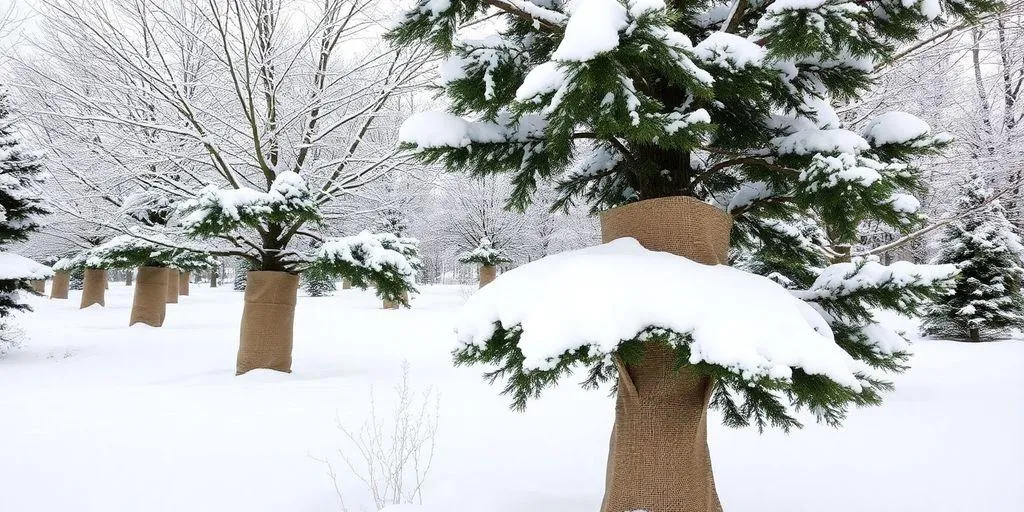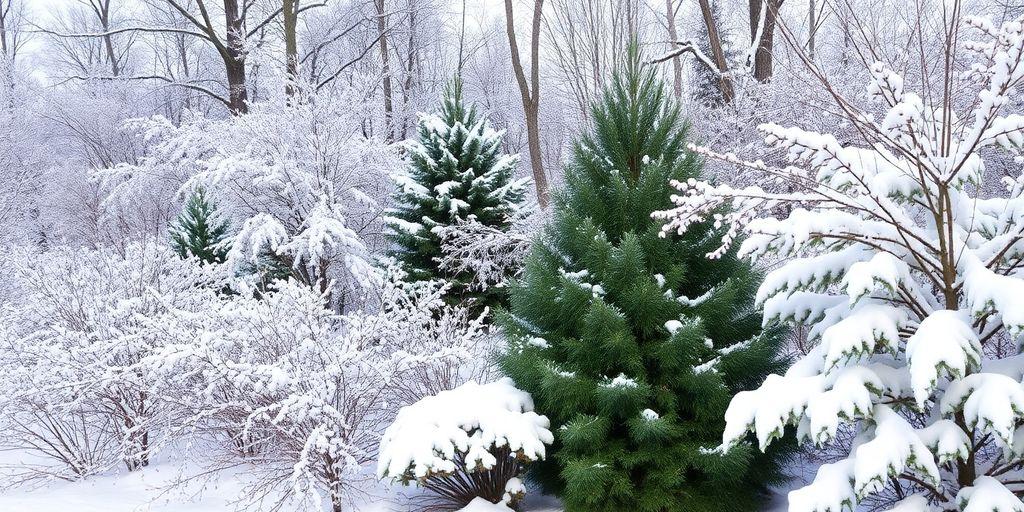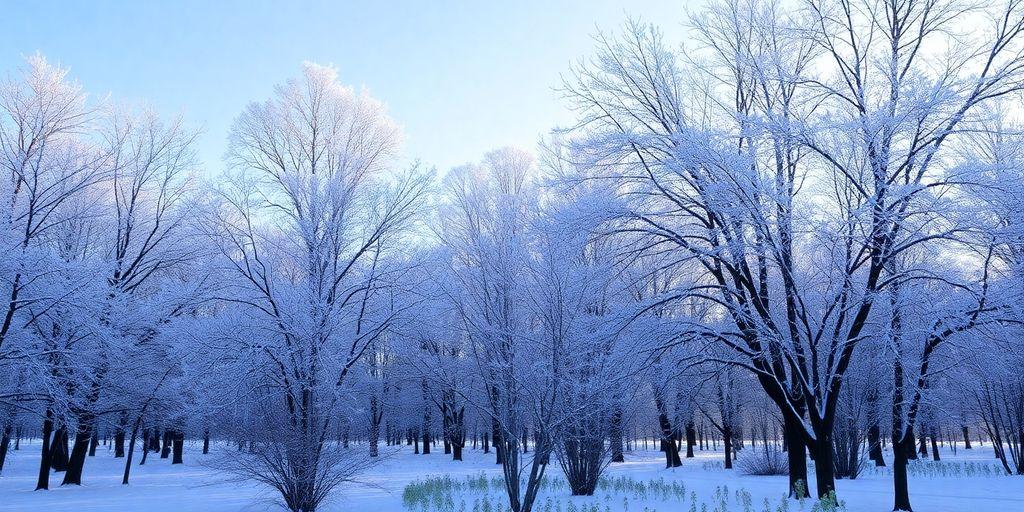Tree Service Montreal
Essential Winter Tree Preparation for Montreal: Tips for a Thriving Landscape
Winter Tree Preparation Montreal: Essential tips for protecting and maintaining your landscape in harsh winters.
Winter's coming, and if you're living in Montreal, you know it's no joke. It's time to think about your garden and how to keep it looking good through the cold months. Whether you've got trees, shrubs, or flowers, prepping them for winter is key. Get ready to dive into some simple tips that can make a big difference in your landscape's health and appearance.
Key Takeaways
. Wrap delicate shrubs with burlap and twine to protect them from snow damage.
. Apply a thicker layer of mulch to insulate the soil and retain moisture during winter.
. Water your plants until the ground freezes to ensure they have enough moisture for the cold months.
Protecting Your Trees from Montreal's Harsh Winter

Using Burlap and Twine for Shrub Protection
Winter can be brutal on our shrubs, especially when the snow starts piling up. One way to shield them is by using burlap and twine. We wrap the shrubs in burlap and secure them with twine to fend off the wind and snow. If you've got newly planted shrubs, this step is even more crucial. For those in spots where snow accumulates, like near driveways, consider tying them up to prevent breakage. Remember, the key is to tie them snugly but not too tight so they can breathe.
The Importance of Mulching for Insulation
Mulching isn't just for summer; it's a winter must-do. We lay down a thicker layer of mulch, around 10 centimeters, to lock in warmth and keep the frost at bay. This extra layer acts like a cozy blanket for the roots, helping them stay snug through the cold months. For a twist, try using cardboard—it decomposes over time, enriching the soil.
Watering Strategies Before the Ground Freezes
Watering might sound odd in the cold, but trust us, it's necessary. We keep watering the shrubs up until the first frost hits. Evergreens, in particular, need that extra moisture since they continue to lose water even in winter. Just be sure to stop once the ground freezes to avoid any root damage.
Pruning Tips to Avoid Frost Damage
Pruning is all about timing. If you haven't done it before the first frost, it's better to wait. The idea is to prune just before the frost to minimize damage. If you're unsure about what to cut, it might be worth checking in with a local expert to get the best advice for your specific plants.
Choosing the Right Winter-Resistant Plants for Montreal

Top Cold-Resistant Perennials for Your Garden
When winter rolls into Montreal, having the right perennials can make all the difference. Sedum, Peony, and Monarda are standout choices. These plants not only resist the cold but also bring vibrant colors to your garden when everything else looks grey. The secret? They store nutrients underground in bulbs and roots, ready to burst back to life come spring.
Evergreens That Thrive in Montreal Winters
Evergreens are the backbone of any winter garden. They stay green and lush, even when the snow piles up. Consider adding Douglas Fir or Boxwood. These plants are hardy and can withstand the harshest of winters. Plus, they offer a beautiful contrast to the white snow, giving your garden a lively appearance.
Incorporating Winter-Blooming Flowers
Winter doesn't mean your garden has to be colorless. With winter-blooming flowers like Witch Hazel and Winter Jasmine, you can add a splash of color even in the coldest months. These flowers are not only visually appealing but also provide nectar for any brave pollinators venturing out in the chill.
Selecting Hardy Shrubs for a Vibrant Landscape
For a vibrant winter landscape, choose hardy shrubs that can take the Montreal winter head-on. Think of shrubs like Red Twig Dogwood or Boxwood. These plants don't just survive winter; they thrive in it, maintaining their structure and adding texture to your garden. They're perfect for creating a dynamic visual interest during the dreary months.
Even in the depths of winter, with the right plant choices, our gardens can remain a source of joy and beauty. It's all about selecting plants that not only survive but flourish in the cold.
Maintaining Soil Health During the Winter Months
Understanding Your Soil Type for Better Planting
Before winter hits, it's important to know what kind of soil you're working with. Is it sandy, clay, or loamy? Each type behaves differently in cold weather. Clay soils can become compacted and waterlogged, while sandy soils might drain too quickly. Loamy soils are generally ideal, offering a balance of drainage and nutrient retention. Testing your soil can help you make informed decisions about what amendments might be necessary to improve its structure and fertility.
The Role of Organic Mulch in Soil Fertility
Mulching is more than just a protective layer; it's a way to enrich your soil over time. Organic mulch, such as shredded leaves, straw, or even cardboard, breaks down slowly, adding nutrients back into the earth. As it decomposes, mulch also helps retain moisture and regulate soil temperature. This means less stress for your plants and a more fertile garden come spring.
Preparing Soil for Spring Planting
Winter is the perfect time to prep your soil for the next growing season. Start by clearing out any dead plants and debris, which can harbor pests and diseases. Consider adding a layer of compost or well-rotted manure to boost soil health. This not only adds nutrients but also improves soil structure. Come spring, your soil will be ready to support new growth.
Avoiding Soil Compaction in Cold Weather
Cold weather can lead to soil compaction, especially if the ground is repeatedly frozen and thawed. To prevent this, avoid walking on your garden beds during winter. If you must access them, lay down boards to distribute your weight. Compacted soil can restrict root growth and reduce water infiltration, so keeping it loose is key for healthy plants.
Expert Tips for a Thriving Winter Landscape in Montreal

Consulting with Local Horticultural Experts
When it comes to creating a winter landscape that truly shines, there's no substitute for local knowledge.
Reaching out to horticultural experts in Montreal can provide invaluable insights into which plants are most likely to thrive in our unique climate. These professionals can offer tailored advice on soil preparation, plant selection, and care techniques that are specific to the region. It’s like having a personalized guide to ensure your garden withstands the harsh winter months.
Innovative Landscaping Designs for Winter
Winter doesn’t mean your garden has to look dull. By incorporating innovative design elements, we can create a landscape that remains interesting and visually appealing even when covered in snow. Consider using structures like pergolas, trellises, or even art installations to add height and interest. Playing with texture by mixing evergreens with plants that have interesting bark or berries can also add visual appeal.
Balancing Aesthetics and Functionality
A great winter landscape balances beauty with practicality. We need to think about how our garden will function under a blanket of snow. For instance, pathways should be designed to allow for easy snow removal, and plant beds should be arranged to protect delicate species from harsh winds. We can achieve this balance by carefully selecting plants that are not only beautiful but also hardy enough to withstand the elements.
Sustainable Practices for Winter Gardening
Sustainability is key to maintaining a healthy garden year-round. By adopting sustainable practices, we not only protect our plants but also the environment. This can include using organic mulches to insulate soil, composting to enrich the earth, and selecting native plants that require less water and care. Implementing these practices ensures our garden remains vibrant and healthy throughout the winter and beyond.
In Montreal, winter is more than just a season; it's an opportunity to transform our outdoor spaces into magical winter wonderlands. With the right approach, our gardens can be a source of joy and beauty, even in the coldest months.
